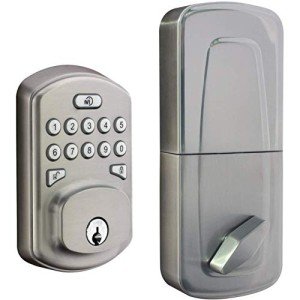Contemporary Lighting in the UK: Transforming Spaces with Illumination
Lighting plays an important function in defining the ambiance and functionality of any space. In the UK, contemporary lighting has actually become a considerable style aspect, offering innovative services that mix aesthetic appeals with usefulness. This short article looks into the various designs, products, and technologies forming contemporary lighting, along with pointers for selecting the most ideal fixtures for various settings.
The Evolution of Contemporary Lighting
Contemporary lighting in the UK shows the changing tastes and technological improvements in design. It encapsulates a large selection of designs, including:
- Minimalist: Characterized by simplicity and clean lines, minimalist lighting fixtures concentrate on kind and function without unneeded decorations.
- Industrial: Inspired by urban settings, industrial lighting combines raw materials like metals and woods with strong designs, creating edgy, functional pieces.
- Scandinavian: Known for its heat and simpleness, Scandinavian lighting frequently includes soft colors and natural products, concentrating on developing a relaxing environment.
- Smart Lighting: This modern pattern integrates technology with design, permitting users to manage their lighting with mobile apps, voice commands, or automation systems.
To highlight the advancement and range in the field of contemporary lighting, consider the table below, which highlights key characteristics of different designs.
| Style | Key Characteristics | Popular Materials | Suitable Spaces |
|---|---|---|---|
| Minimalist | Easy, functional styles | Metal, glass, wood | Modern homes, offices |
| Industrial | Raw, unfinished appearance | Steel, concrete, wood | Lofts, galleries |
| Scandinavian | Relaxing, warm looks | Natural fibers, light wood | Living rooms, cafes |
| Smart | Integrated innovation, automation | Varies commonly | Residences, offices, retail spaces |
Selecting Contemporary Lighting Fixtures
Picking the best lighting fixtures for a space requires mindful consideration of several factors. Here are essential aspects to bear in mind:
1. Function of the Space
Before selecting fixtures, think about the desired usage of the location. Various functions require different types of lighting:
- Task Lighting: Focused illumination for activities such as reading, cooking, or studying. Examples include table lamps and under-cabinet lights.
- Ambient Lighting: General lighting that offers overall lighting. Ceiling lights and pendant fixtures fall under this category.
- Accent Lighting: Designed to highlight specific features or locations, such as art work or architectural information. Wall sconces and mounted lights prevail options.
2. Design and Theme
The lighting must match the existing decor. Go with fixtures that match or enhance the overall style of the area, whether it's contemporary, rustic, or diverse.
3. Size and Scale
Consider the proportion of the lighting fixtures relative to the space. A large chandelier might look spectacular above a roomy dining table, while smaller pendant lights work well in compact settings.
4. Energy Efficiency
With rising energy costs and ecological concerns, selecting energy-efficient lighting choices is necessary. LED lights are an excellent choice, using durability and lower energy consumption.
5. Flexibility
In modern design, flexibility is key. Fixtures that can be changed or rearranged improve performance, enabling users to produce different atmospheres as required.
Popular Contemporary Lighting Brands in the UK
The contemporary lighting market in the UK boasts various brand names understood for their ingenious styles and quality craftsmanship. Some notable mentions include:
- FLOS: An Italian brand commemorated for its artistic and iconic light fixtures that often function as pieces of art.
- Tom Dixon: A British designer recognized for his modern, industrial styles that perfectly include metal and light.
- Anglepoise: Known for its flexible, functional lamps, best for a variety of settings from office to innovative studios.
- John Lewis: Offers a range of contemporary lighting solutions that cater to a broader audience, consisting of affordable yet stylish options.
FAQs about Contemporary Lighting in the UK
1. What is contemporary lighting?
Contemporary lighting refers to lighting designs and fixtures that show current design patterns, typically characterized by tidy lines, innovative shapes, and using modern materials and technologies.
2. How do I select the right lighting for my home?
Think about the purpose of the room, existing design, size of fixtures, energy efficiency, and flexibility. Examine how each piece will add to the general atmosphere and functionality of your space.
3. What are some energy-efficient lighting options available in the UK?
LED lights are the most prominent energy-efficient option, known for their long lifespan and low energy intake. Compact fluorescent lights (CFLs) and halogen bulbs are other options.
4. Where can I look for contemporary lighting in the UK?
Contemporary lighting can be discovered in various retail outlets, both online and in physical stores. Noteworthy merchants include John Lewis, Habitat, and specialized lighting shops.
5. Can contemporary lighting work in traditional areas?
Absolutely! Buy Lighting Fixtures UK can enhance traditional areas when selected attentively. Picking fixtures with a balance in between modern and timeless components can produce a harmonious design.
Contemporary lighting in the UK represents more than just illumination; it embodies style innovation and imagination, transforming spaces and boosting performance. As patterns continue to evolve, house owners and designers alike can explore an expansive variety of styles and technologies, ensuring that every room bursts with life, heat, and character. By considering the vital aspects detailed in this article, one can curate a collection of lighting fixtures that resonates with personal design and fulfills practical needs, ultimately forming comfy and visually enticing environments.

